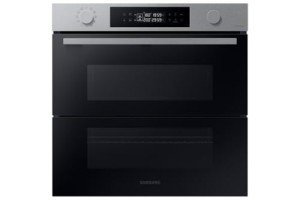The Comprehensive Guide to Built-In Cookers and Hobs
Built-in cookers and hobs have become significantly popular in modern kitchen areas, offering both functionality and aesthetic appeal. These integrated appliances, developed to fit flawlessly into kitchen cabinets, make the most of space while improving the cooking experience. This short article will explore the various kinds of built-in cookers and hobs, their advantages, maintenance ideas, and often asked questions.
Comprehending Built-In Cookers and Hobs
Built-in cookers typically consist of ovens, while hobs refer to the cooking surface that can integrate numerous heating components such as burner, electric coils, or induction zones. When combined, these two appliances create an effective and structured cooking setup.
Kinds Of Built-In Cookers and Hobs
When selecting a built-in cooker and hob, it's vital to comprehend the numerous types offered. Here's a detailed table comparing the primary types:
| Type | Description | Pros | Cons |
|---|---|---|---|
| Gas Hob | Uses gas as a fuel source. | Quick heat change, cooking control. | Needs gas line setup. |
| Electric Hob | Utilizes electric coils or strong plate heating. | Generally cheaper, simple to tidy. | Slower to heat and cool down. |
| Induction Hob | Utilizes electromagnetic energy for cooking. | Fast heating, energy-efficient, safe. | Expensive, requires suitable cookware. |
| Built-In Oven | Can be electric, gas, or combination. | Versatile cooking choices, different sizes. | Fixed location, potential setup complexity. |
Benefits of Built-In Cookers and Hobs
- Space-Saving Design: Built-in units conserve space by incorporating perfectly into the kitchen layout, leaving more room for storage and counter tops.
- Visual Appeal: They offer a sleek and contemporary appearance, raising the style of any kitchen.
- Modification: With many styles and setups, house owners can choose appliances that best suit their cooking routines and kitchen dimensions.
- Boosted Functionality: Built-in cookers often include advanced functions such as self-cleaning choices, numerous cooking modes, and programmable timers.
- Safety Features: Modern hobs include features like automatic shut-off and kid locks, enhancing security in the kitchen.
Maintenance Tips for Built-In Cookers and Hobs
To ensure the longevity and optimum performance of built-in cookers and hobs, correct maintenance is vital. Below are necessary upkeep pointers:
- Regular Cleaning: Wipe spills and spots immediately to prevent them from hardening or becoming more difficult to clean.
- Use Appropriate Cleaning Supplies: Avoid abrasive materials that can scratch surfaces. Usage cleaner specifically created for the type of home appliance you have.
- Inspect Gas and Electrical Connections: Regular examinations can prevent leakages and make sure optimal efficiency.
- Adjust Temperature Settings: If you observe disparities in cooking temperatures, think about recalibrating the oven.
- Arrange Professional Servicing: Annual check-ups can help determine and rectify minor issues before they escalate.
Selecting the Right Built-In Cooker and Hob
When selecting a built-in cooker and hob, numerous elements need to be thought about:
1. Cooking Preferences:
- If you enjoy fast temperature adjustments, a gas hob might be perfect.
- For energy performance and uniform cooking, induction hobs are chosen.
2. Kitchen Size:
- Consider the area available for installation. Procedure cabinets and other appliances to ensure the chosen system fits easily.
3. Design and Design:
- Opt for designs that complement your kitchen's décor. Built-in systems been available in various finishes, such as stainless steel, black, or customized kitchen cabinetry.
4. Budget plan:
- Establish a budget that aspects in purchase costs, installation charges, and long-lasting business expenses.
5. Brand name Reputation:
- Research trustworthy brand names understood for reliability and customer service. Reading evaluations and seeking recommendations can also be practical.
Often Asked Questions (FAQs)
Q1: Are built-in cookers and hobs more expensive than conventional units?A1: Generally, built-in cookers and hobs can be more costly upfront due to installation and design. Nevertheless, they might provide long-term savings through energy efficiency.
Q2: Can I install a built-in cooker or hob myself?A2: While some might be installed by house owners, it is frequently advised to employ a professional, especially for gas or complex electrical connections, to make sure safety and compliance with regional codes.
Q3: What is the typical lifespan of built-in cookers and hobs?A3: With correct care, built-in cookers and hobs can last anywhere from 10 to 15 years. Routine upkeep can extend their life.
Q4: Is it possible to combine various kinds of hobs with the same oven?A4: Yes, lots of cooking areas feature a mix of hobs (e.g., gas and induction) along with a built-in oven, enabling flexible cooking options.
Q5: How do I know if my hob is energy-efficient?A5: Look for energy effectiveness scores and consider induction hobs, which generally provide remarkable energy performance compared to gas or standard electric hobs.
Built-in cookers and hobs provide a blend of modern design and advanced cooking technology, enhancing any kitchen's performance and style. By comprehending built-in / integrated hobs and ovens , their advantages, and maintenance needs, homeowners can make informed choices when investing in these necessary kitchen appliances. With correct choice and care, built-in cookers and hobs can offer years of enjoyable cooking and a seamless kitchen experience.

